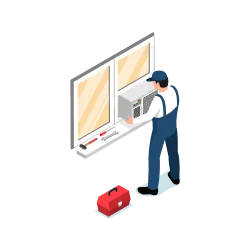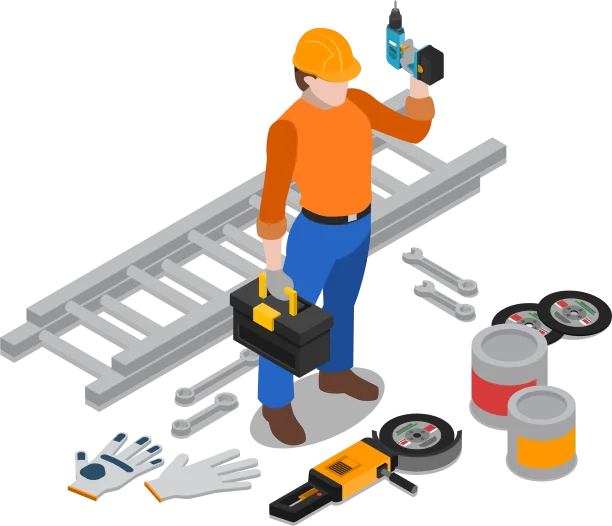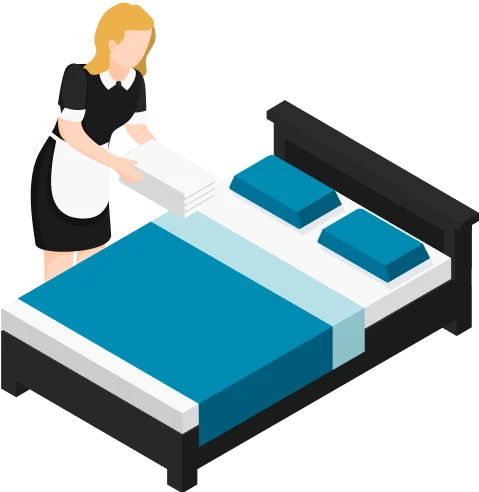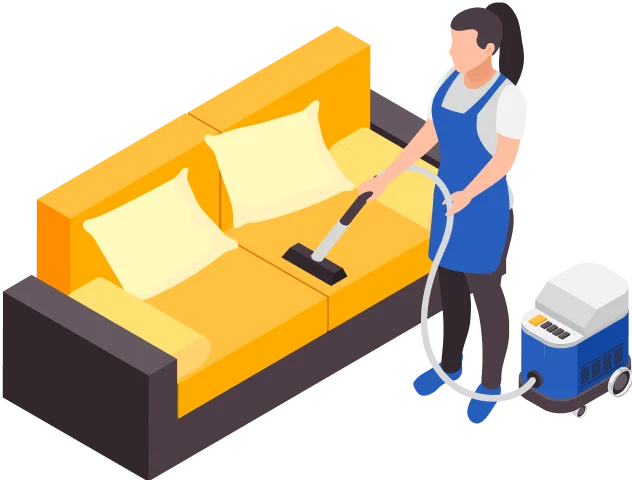How to Keep Your Sofa Looking New Between Cleanings
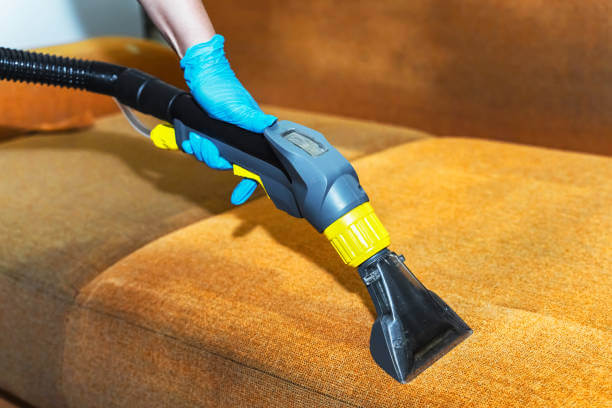
Table of contents
- Why Sofa Hygiene Is Important?
- Health Effects of Dirty Furniture
- Clean Couch for Healthier Living
- Dust Mites on Upholstery
- Buildup of Mold and Bacteria
- Indoor Pollution and Respiratory Health
- How to Keep Your Sofa Looking New Between Cleanings?
- 1. Vacuum regularly
- 2. Utilize Protective Covers
- 3. Rotate and Fluff Cushions
- 4. Clean Spots Immediately
- 5. Air Out the Sofa
- 6. Baking Soda to Deodorize
- 7. Brush Off Pet Hair
- 8. Clean Feet and Paws
- 9. Keep it Away from Direct Sun Exposure
- 10. Hire a Professional Cleaning
- Deep Cleaning Techniques to Make Your Sofa Last Longer
- 1. Steam Cleaning
- 2. Shampooing Upholstery
- 3. Foam Cleaning
- 4. Dry Cleaning Solutions
- 5. Vacuum with Deep-Suction Attachment
- 6. Baking Soda and Vinegar Treatment
- 7. Professional Sofa Cleaning Services
- Urban Mop Sofa Cleaning Service: Your Cleaning Partner
- Benefits of Professional Sofa Cleaning Services
- Conclusion
- FAQs
- Why Sofa Hygiene Is Important?
- Health Effects of Dirty Furniture
- Clean Couch for Healthier Living
- Dust Mites on Upholstery
- Buildup of Mold and Bacteria
- Indoor Pollution and Respiratory Health
- How to Keep Your Sofa Looking New Between Cleanings?
- 1. Vacuum regularly
- 2. Utilize Protective Covers
- 3. Rotate and Fluff Cushions
- 4. Clean Spots Immediately
- 5. Air Out the Sofa
- 6. Baking Soda to Deodorize
- 7. Brush Off Pet Hair
- 8. Clean Feet and Paws
- 9. Keep it Away from Direct Sun Exposure
- 10. Hire a Professional Cleaning
- Deep Cleaning Techniques to Make Your Sofa Last Longer
- 1. Steam Cleaning
- 2. Shampooing Upholstery
- 3. Foam Cleaning
- 4. Dry Cleaning Solutions
- 5. Vacuum with Deep-Suction Attachment
- 6. Baking Soda and Vinegar Treatment
- 7. Professional Sofa Cleaning Services
- Urban Mop Sofa Cleaning Service: Your Cleaning Partner
- Benefits of Professional Sofa Cleaning Services
- Conclusion
- FAQs
Your sofa is your cosy companion, whether on the couch watching your favourite TV program, hosting overnight visitors, or a Saturday afternoon nap. However, with hectic daily life and wear and tear, your sofa can become dirty in seconds. Professional cleanings are sometimes necessary, but regular sofa cleaning is required in between cleanings.
The upgrade of your home's appearance through cleaning additionally results in better indoor air quality.
This paper examines three key aspects of couch maintenance, beginning with the importance of regular cleaning, followed by the health implications of furniture hygiene, and methods for maintaining a sofa's fresh state throughout the year..jpg)
Schedule your Urban Mop deep couch cleaning today and reap the rewards of a cleaner, healthier home!
Why Sofa Hygiene Is Important?
Health Effects of Dirty Furniture
Sofas are not only refuges of comfort but also refuges of dust and allergens, pet hair and dander, crumbs, sweat, etc. Unless cleaned regularly, these intruders can cause a wide range of health issues, including skin irritation from dirty fabric, breathing problems, and even bacterial and mildew growth. Your sofa's secret dirt is doing more harm to your respiratory system than you can imagine.
Clean Couch for Healthier Living
A neat aesthetic defines this design choice, creating a sanitary environment that makes it a healthier option for home use. Sanitization of indoor spaces becomes possible through furniture clearing because dust cannot accumulate, thereby benefiting individuals suffering from allergies, as well as people with respiratory issues and domestic pet owners. The combined presence of home air pollution, fungi, and germs poses serious health threats that are exacerbated by dust mites. Deep couch cleaning requires more than surface cleaning, for it creates effects both inside and outside the upholstery.
Dust Mites on Upholstery
Dust mite is stated to be one of the leading causes of indoor allergy problems. They are germs found on surfaces, such as furniture, and feed on human skin. When shed and accumulate on the furniture, they serve as a source of food, allowing them to exist in hot and humid conditions. Recognising the importance of upholstery cleaning, regular couch maintenance offers a counterbalance to dust mite numbers, helping to keep both reactions in check.
Buildup of Mold and Bacteria
Your sofa retains moisture, food fragments, human sweat, and skin surface oil. Besides bacteria, mold thrives in favorable conditions, namely, those that are damp and warm. Cleansing furniture has the effect of reducing dust accumulation, which in turn enhances the quality of air inhaled by those susceptible to allergies, asthma, or pet owners.
Indoor Pollution and Respiratory Health
Among the hazards entirely related to the furniture materials and the home air quality are bacteria, moulds, and dust mites. Deep cleaning a couch involves more than just surface-level cleaning.
Poor sofa hygiene can negatively impact Home air quality, furniture, and respiratory health, making deep cleaning and maintenance a must.
How to Keep Your Sofa Looking New Between Cleanings?
The living room should be one of the most important rooms in every home, as it is a place acknowledged as a comfort zone and a living, elegant area. While nuzzling a pet, entertaining friends, or watching crazy day's news, your sofa is in operation. Your sofa requires professional cleaning, but the time frame between cleanings determines the function of a clean sofa for better health, freshness, and long-lasting beauty.
1. Vacuum regularly
Regular vacuuming of your sofa once a week is essential for proper care, as recommended. Vacuum cleaners used with upholstery tools must have the capability to collect dirt and dust particles from sofa surfaces and deep corners.
People should avoid eating and drinking on sofa seating areas because both activities can lead to the formation of stains and the entry of dirt on the surface. Vacuuming the sofa should be done weekly as part of regular cleaning. If one has both pets and children at home, they ensure that they clean all the hair and dirt that may be on the compound within one to two days. Sofa cleaning daily will keep it looking clean as well as enhancing a Cleaner and Healthier Living Environment in the living area.
2. Utilize Protective Covers
Both spills and stains, alongside normal wear, will be protected on fabric surfaces when protective covers are used. Protective covers prove highly advantageous in homes with children or pets because these households tend to encounter accidental, destructive incidents. Slipcovers with detachable features enhance cleaning efficiency, making them ideal components for maintaining a tidy environment. Protective covers enable householders to change their living room appearance using the same furniture rather than purchasing new items. The placement of your sofa at a distance from potential sources of contamination allows protective covers to safeguard fabric integrity over time.
3. Rotate and Fluff Cushions
Protective covers shield fabrics from common damages and spills to provide overall protection. The importance of protective covers increases for adults with children and pets at home, as domestic accidents are frequent in such households. Quick cleaning becomes possible because detachable slipcovers are available in a basic format, which makes them ideal for maintaining neatness. By using protective covers, homeowners can achieve a fresh appearance in their living area without requiring new furniture. The placement of your sofa at a distance from potential sources of contamination allows protective covers to safeguard fabric integrity over time.
4. Clean Spots Immediately
The delay in spill cleanup should never extend beyond immediate action, as it can render permanent damage unavoidable. A dry cleaning cloth placed over the spill region will absorb the leaking substance while you use gentle blotting motions. The rubbing motion should be avoided because it will push the material deeper into the fabric structure, thereby injuring the fabric strands.
Pretest a gentle cleaner that matches the sofa material, and always try a small out-of-the-way test area. Immediate spot removal prevents the stain from setting and keeps the sofa looking like new until the next professional cleaning.
5. Air Out the Sofa
Your sofa will benefit from air exposure that removes scents and moisture buildup, which can accumulate over time. Clean your couch by removing items from its cushions, then open every window for air circulation below and above the chair. Rainy days serve as ideal conditions for air-drying sofas, as water compounds promote the development of mould and mildew. Venting your couch periodically freshens the fabric, eliminates damp smells, and keeps the indoor area cleaner. Add this step to guarantee the longevity and cleanliness of your furniture, and keep it in good condition.
6. Baking Soda to Deodorize
Baking soda is an effective yet non-harmful deodoriser for your sofa. Sprinkle some on the furniture, let it sit for 15 to 20 minutes to absorb odours, and then vacuum. It does not use chemicals to deodorise and is thus pet-friendly and Child-Safe for furniture cleaning in domestic environments. Using baking soda for daily deodorising keeps your couch smelling clean and can be used after accidents or for those with pets. It is a simple yet effective resource when designing a living room of your choice.
7. Brush Off Pet Hair
Pet hair accumulates on sofa tops, and occasional removal is therefore required. Use a lint roller, pet brush, or vacuum cleaner with a pet hair attachment to clean the top. For extremely unruly hair, a gloved wet hand will prove to be very useful. Sweep hair clumps with ease. Vacuuming your sofa periodically not only makes your furniture appear clean but also removes allergens from the surrounding space. Reserving for cutting off pet hairs is necessary for couch furniture cleaning, as frequently as required.
8. Clean Feet and Paws
Encouraging clean paws and feet before pets or children use the couch minimizes the dispersal of dirt and grime. Place doormats at the entrance and even set up a pawa-wipe station after an outdoor excursion with animals. When your pets sleep on their bed or anywhere else besides the couch, you will minimize stress on the sofa. Cleaning your sofa right after purchase will help protect it from excessive stains, which in turn extends the overall lifespan of your couch.
9. Keep it Away from Direct Sun Exposure
Sunlight will also cause the sofa material to degrade over time, resulting in discoloration and fading. Place your sofa outside the window range or screen direct sunlight with curtains and blinds. Where a move is not possible, consider using UV-resistant window film to minimise damage from sunlight. Lightening your sofa prevents it from fading and degrading the material, keeping it light and lasting longer.
10. Hire a Professional Cleaning
Even when cleaning the house is okay, Fabric sanitization must be done professionally. Cleaning specialists have recommended that various types of furniture should be cleaned at least once a year, while others should be cleaned more often in certain homes, mostly those that keep pets and with high used. The professionals are capable of cleaning areas that other general cleaning processes are unable to clean, such as dirt, allergens, and germs, among others.
The method of cleaning that results in thorough work performance helps your couch stay in perfect condition while making it safer for your home environment.
Deep Cleaning Techniques to Make Your Sofa Last Longer
Surface cleaning is crucial, but deep cleaning is the most essential step in making your sofa last longer. Grime, oil, allergens, and germs seep into the surface with time, and thus the material will become dirty, odoriferous, or hardened. Regular deep cleaning techniques can help strengthen your sofa's structure and restore it to its original appearance.
1. Steam Cleaning
Steam cleaning is a powerful process that applies hot-temperature steam to clean an area, in addition to eradicating rooted dirt on the strands' fibre.
Some specific organisms that are easily killed by the effect of steam cleaning include the dust mites, bacteria, and mold spores. One should strictly observe the use of steam cleaning techniques, as users should avoid making delicate fabrics wet. The process should be used every 6–12 months, or more frequently on heavily trafficked areas, such as sofas.
Let stains take over your couch no more—act today and keep your sofa clean and in optimal condition!
2. Shampooing Upholstery
An upholstery shampoo that is safe for use on fabrics will emulsify grime built up in fibres, food stains, oils, general dirt, and filth. It includes the use of a shampoo, gentle brushing, and gentle brushing using an extract from a wet vacuum. Test-run the process on an out-of-sight area first before attempting to treat a complete piece of upholstery. The treatment restores the appearance of the sofa and pulls out odours deep within the fabric.
3. Foam Cleaning
A foam cleaner for sofas is suitable for less rough fabrics that do not require dampening. Apply the foam to the target surfaces, then maintain it in position before cleaning with a damp cloth.
It keeps the sofa clean without the danger of water damage. Foam cleaning is adequate for small stains and surface cleanings between in-depth cleanings.
4. Dry Cleaning Solutions
For fragile items like silk, velvet, or suede, older water-based methods might be dangerous. For such cases, professional-strength dry cleaning liquid is optimal. The liquids clean away dirt and grease without the need for water, preserving the material's integrity and original texture. Refer to the manufacturer's guidelines or have experts test for compatibility in every scenario.
5. Vacuum with Deep-Suction Attachment
Vacuuming is beyond surface cleaning. Raking and scooping garbage at the bottom levels is a task for higher suction or powered brushes on certain machines. It prevents allergens and helps respiratory health by eliminating irritants that linger in the air. Use this process weekly, especially for pet owners or family members who have allergy problems.
6. Baking Soda and Vinegar Treatment
For a natural and free deep clean, a mixture of vinegar and baking soda is ideal. Use baking soda first to treat the sofa and leave it for 15–30 minutes. Lightly mist with a mixture of water and vinegar, brush, and blot with a dry towel. It is this trick that kills mould and bacteria deposits, kills odour-causing chemicals, and whitens the fabric.
7. Professional Sofa Cleaning Services
Professional sofa cleaning services, as a preventive measure, are the safest and most cost-effective way to achieve deep cleaning. The experts use industrial-grade equipment and skill levels appropriate to your sofa material. Urban Mop-type businesses provide service with eco-friendly, material-based techniques.
Urban Mop Sofa Cleaning Service: Your Cleaning Partner
When daily cleaning simply isn't enough, trust the experts at Urban Mop Professional sofa cleaning services. Decades of quality control and commitment have enabled Urban Mop to utilize the best techniques and non-toxic chemicals, leaving your furniture looking brand new and enhancing indoor air quality.
Whether you're battling dust mites on your sofa, mould, or simply need to let some fresh air into your house, Urban Mop offers professional Regular sofa maintenance that will save fabric, eliminate allergens, and keep your household healthy. Treatments are affordable, child-friendly, and tailored to each home's requirements.
Benefits of Professional Sofa Cleaning Services
- Deeper allergen removal
- Improved indoor air quality
- Dust mite and bacteria elimination
- Extended furniture life
- Improved look and texture of the fabric
Professional Sofa cleaning benefits not only give your sofa a fresh look on the exterior, but also provide a deep clean that restores it to its original state.
Conclusion
It is your responsibility to keep your sofa tidy between professional cleans, both for health reasons and aesthetic purposes. Guiding you are smart sofa cleaning suggestions, from the tactics of thorough cleaning to hiring the services of professional companies such as Urban Mop. Your sofa is now a haven where you can recline comfortably, while still maintaining hygiene and cleanliness, in your living room at home.
FAQs
1. How does a neglected couch affect human health?
Any lingering allergens, bacteria, and mould on an uncleaned couch will simultaneously lead to respiratory issues and rashes and degrade the air quality inside your house.
2. How frequently do I professionally clean my couch?
You would professionally clean your couch every 6 to 12 months, based on the amount of shedding your pet produces and the degree of juice spilling and mud play your children engage in.
3. Are the fabric sanitizing treatments safe for pets and children?
Yes. Use a chemical-free and eco-friendly child-safe furniture cleaner, and opt for a product that is pet hair and dander-friendly.
